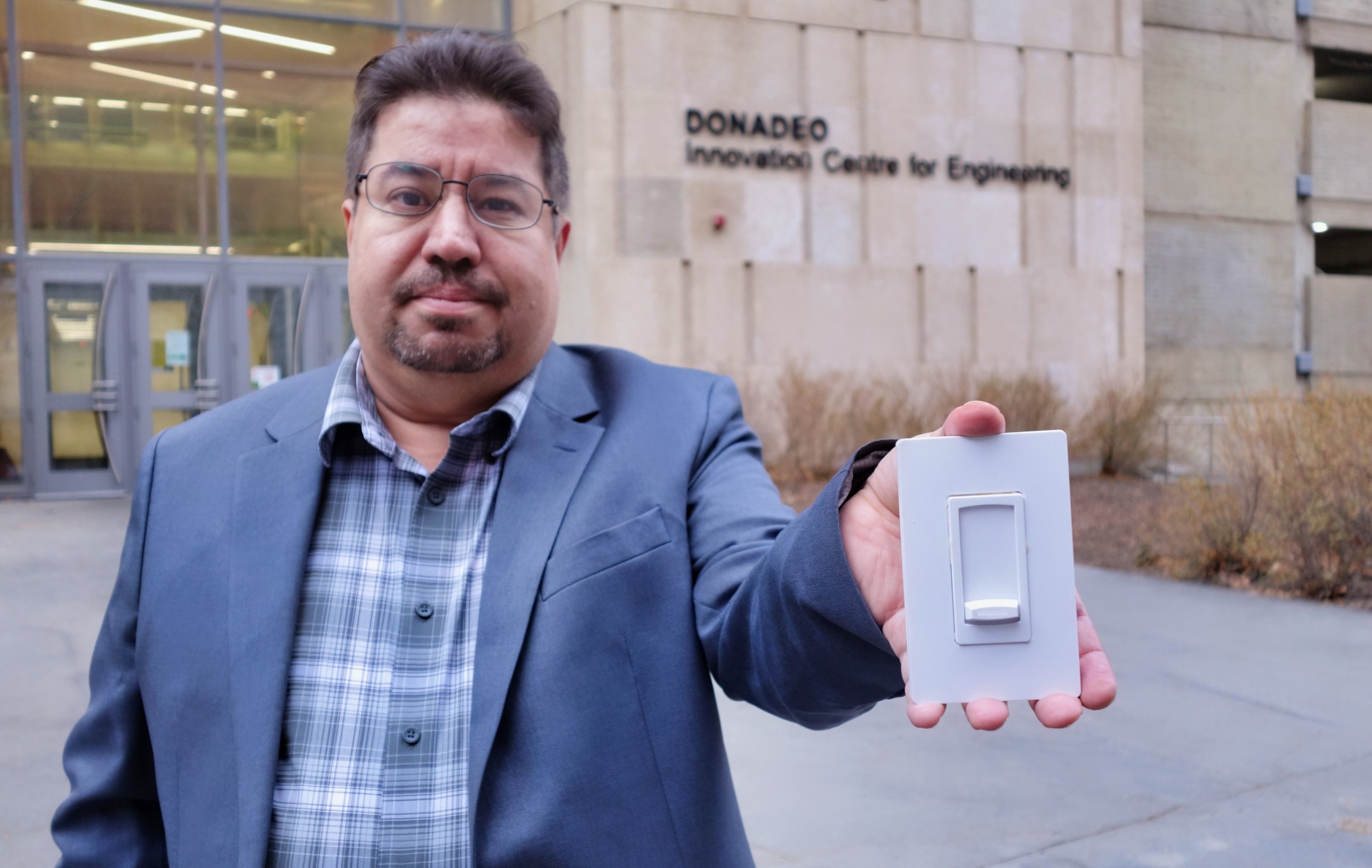A University of Alberta engineering researcher has developed a wireless light switch that could reduce the cost of wiring a house by as much as 50 per cent.
Wireless switches — consisting of a transmitter on the switch and a receiver near a light fixture or other appliance — have been around for many years, and have been proven that they can reduce the material and labour cost for wiring houses, says Kambiz Moez, director of electrical engineering in the Department of Electrical and Computer Engineering, but they require batteries to operate.
“If you have 50 wireless light switches in a house, it’s very inconvenient for an average homeowner to run around and replace batteries all the time,” he says.
What makes his system unique is that the switches run without batteries, harvesting energy from ambient sources such as radio frequency signals. Instead, each floor would have one or two RF (radio frequency) power transmitters to power up all switches inside the house.
Moez has so far developed a prototype switch for less than one dollar that can be installed anywhere on a wall. The system is “scalable, easy to replicate and adopt, and can be customized to meet the specific needs of homeowners, contractors and regulators,” he says.
In 2018, Alberta became the first province to allow wireless electricity control in new homes. With the current housing crisis in Canada, Moez says his innovation could help reduce construction costs.
The switch can also accommodate sensors for temperature, humidity and occupancy that can drastically reduce energy consumption.
“Imagine heating a 3,000-square-foot house, but you’re only using a room at any given time. If your house has wirelessly controlled vents, you can close the vents outside that room, or maybe a couple of bedrooms,” says Moez.
The “seamlessly automated” system could also turn lights on and off as occupants move from room to room.
“By enabling the wireless control of each section of homes, our solution prevents unnecessary use of energy, which in turn lowers energy bills and reduces carbon emissions,” says Moez.
His next step is to set up a spinoff company or initiate collaboration with an established company capable of upscaling for mass production. Moez and his team have received incubation funding from the CMHC Housing Supply Challenge to develop a proof-of-concept prototype of the batteryless wireless switch. If successful in the next phase of the competition, they could receive up to $3 million more to scale their solution.
The Housing Supply Challenge is providing $300 million over five years to housing professionals and experts to remove or reduce barriers that hinder housing supply.
